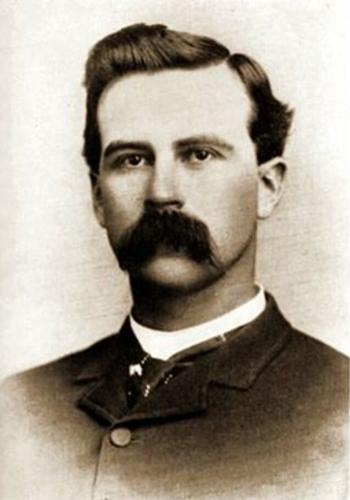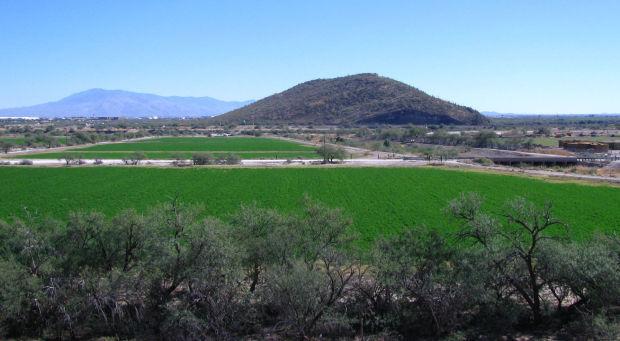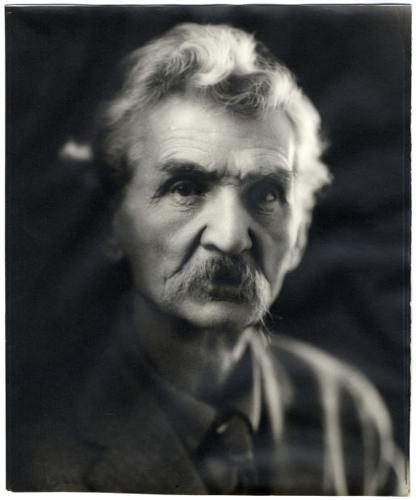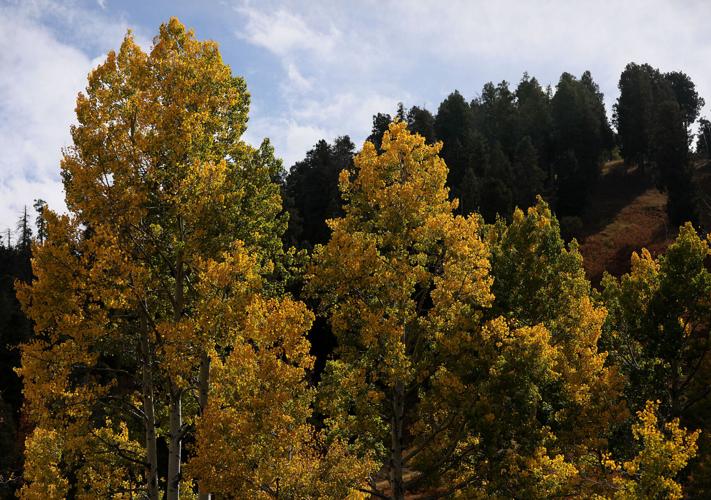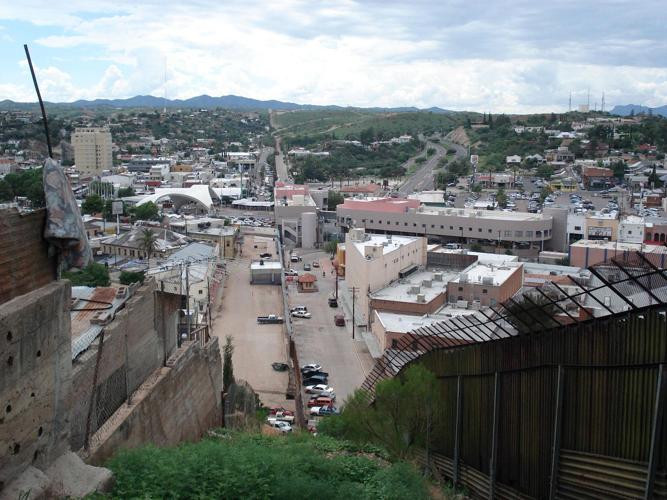1) Who is Martinez Hill, a volcanic outcropping east of San Xavier del Bac Mission, named for?
A) Miguel Martinez, who homesteaded the hill and surrounding land in 1868. He later set up a trading post near the San Xavier Church and became well-known among the O’odham.
B) Jose M. Martinez, at one point in the 1830s, the commander of the Tucson Presidio, who later petitioned for and received land near the San Xavier Church, which either was next to the hill or included the hill.
C) Aleta Martinez (Aleta M. Berger), born into an influential Tohono O’odham family, who later helped to advocate for creation of the San Xavier Reservation in 1874.

Martinez Hill, with Interstate 19 in front.
2) Franklin Street in downtown Tucson is named for Charles A. Franklin, who helped survey Tucson in the 1870s and later worked for several territorial newspapers. What was his real name?
A) Christopher Aboul
B) William Franklin
C) Albert F. Banta

Charles A. Franklin
3) In Tucson Mountain Park off of Kinney Road is a small road called Hal Gras Road. Who or what is this road named for?
A) Harold W. “Hal” Gras Jr., longtime employee of the nearby Arizona-Sonora Desert Museum and host of the museum’s TV show called Desert Trails (later renamed The Desert Speaks).
B) Originally named “Hilia Grass Road,” it was later changed to “Hilia Gras Road” and finally to “Hal Gras Road”. It was originally named for a Hilia grass or Hilia Gramineae in Latin, a type of grass once common in the Tucson Mountains during the period that the Hohokam lived nearby.
3) Halbert Gras, who bought property in the Tucson Mountains during the early 1920s and constructed a stone house near what is now Ironwood Picnic Area. He and his wife lived here until the 1960s, when he died. His wife Greta petitioned Pima County to name the road, which her husband had originally built, in his honor.

Tucson Mountain Park. A young man takes a selfie with the remnants of a snowfall in January 2021.
4) Jeff Milton is the namesake of Milton St. and Milton Road on the south side of Tucson. What is he best known for?
A) Milton was a locally-born actor who grew up on the south side. In the 1920s and 1930s, he acted in both silent and talkie films. He had roles in such films as American Madness, Scarface and The Informer.
B) Milton resided in Tucson for many years. In 1904, he became a mounted Chinese inspector for the Bureau of Immigration. On horseback and later by automobile, he patrolled the U.S.-Mexico border for many years, arresting Chinese immigrants illegally crossing the border. Because of his numerous years of service, in 1924, at the age of 62, he became the first officer appointed to the newly formed U.S. Immigration Service Border Patrol, becoming the first Border Patrol agent.
C) Milton came to Tucson just after the train arrived in 1880. Realizing train passengers disembarking in town would need a way to get from Tucson to what is now called Nogales and to Mexico, he set up the Milton Stage Line. The coach line ran from the Tucson train station to the Milton Stage Stop at what is now Milton Street and Interstate 19, then south to the border. While that stage stop is long gone, his old adobe house at 960 W. Milton St. is still in existence, although heavily modified.

Jeff Milton
5) Mount Lemmon is named in honor of Sara Lemmon, a botanist from California.
A) True
B) False

Mount Lemmon
6) Where does Starr Pass Blvd., in southwest Tucson, derive its name from?
A) Richard Starr, who came to Tucson in 1880 and worked as a telegrapher for the Southern Pacific Railroad. He later helped build a toll road and telegraph line from Tucson through the Tucson Mountains area to the Quijotoa mining district, near the Quijotoa Mountains on what is now the Tohono O’odham Nation. It was originally called the Quijotoa Toll Road, then later Starr Pass.
B) In the 1940s and 1950s, the dirt road that later became Starr Pass Boulevard was used by Tucsonans to travel to the foothills of the Tucson Mountains. Here, in an undeveloped area of the city, they would stargaze. The dirt road was informally called “Star Pass” as it passed between hills and mountains. Later it incorrectly became “Starr Pass,” the name it still bears.
C) Michael Ray Starr had a ranch in what is now called the Starr Pass area. The dirt path that is now called Starr Pass Boulevard was how he would drive his cattle in and out of his ranch. Not much more is known about this rancher other than the area still bears his surname.

7) Nogales Highway derives its name from the border cities of Nogales, Arizona and Nogales, Sonora. What event took place in 1915 that still bears influence on life today in these cities?
A) The Nogales Fire Department was officially formed, replacing the Nogales Volunteer Hose Company. This fire department served both cities at one point. The department was later split up, with about half the firefighters ending up on each side of the border.
B) The telephone system was connected between both sides of Nogales, which ended the need for telegraph and telegrams to be delivered across the border. This telephone system, while much more advanced, is still in use today.
C) Gov. Jose M. Maytorena of Sonora, Mexico, ordered construction of an 11-wire fence along the border (International Street) between Nogales, Arizona and Nogales, Sonora, although it was taken down a few months later. In 1918, as a result of the Battle of Ambos Nogales, the U.S. and Mexico agreed on a permanent fence down the middle of International Street, which still exists.

Nogales, Arizona and Nogales, Sonora, known as Ambos Nogales, as seen from the Mexican side.
Answers: 1) B 2) C 3) A 4) B 5) A 6) A 7) C
Take our latest video quiz to test your knowledge of Tucson history and facts.


